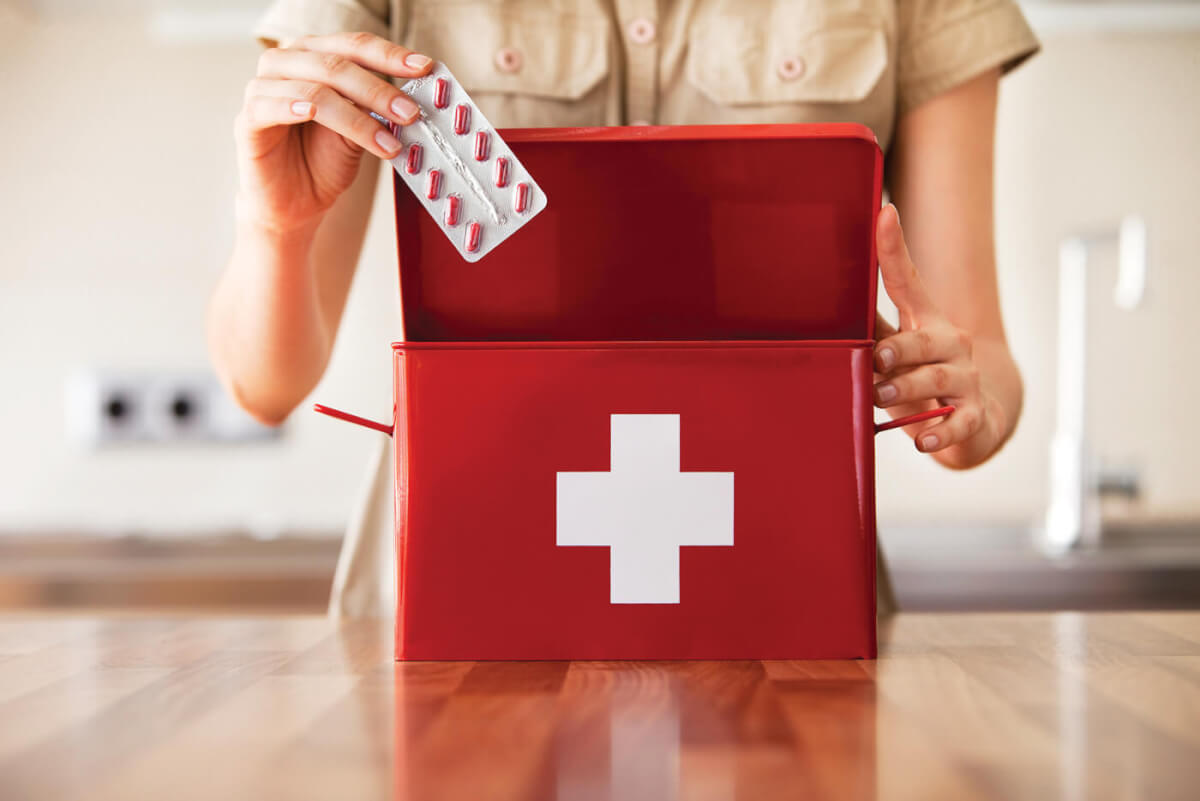After giving the matter some thought, you hopefully will realize the importance of knowing how to perform first aid. Whether it’s for situations ranging from the simple to the extreme, you’ve determined that appropriate training is required. You can’t put any of your first-aid knowledge and training to use without a good first-aid kit, so now you need to put together the kit and tools you need to use your new skills.
IFAK
Think of your individual first-aid kit, or IFAK, as the toolkit that will help you handle whatever medical challenge you face. You should be able to carry it on your person at all times so it should only have the things in it that you are trained to use and it should be simple rather than complex.
An IFAK is designed to meet the following criteria:
- It can enable you to handle basic, intermediate and emergency levels of medical situations
- You can carry it with you at all times
- It is fairly simple
BASIC KIT
A basic kit should contain what you typically find in your home first-aid kit. It should include materials with which to make bandages (either large Band-Aids or gauze pads and tape for making your own), a tube of antibiotic ointment to prevent infections from cuts, a few alcohol wipes for cleaning the wound area, personal medications and over-the-counter medications for allergic reactions/hay fever, diarrhea and pain. It should also contain a couple of sets of non-latex gloves in case you need to help someone other than yourself.
Remember: All you need in a basic kit is enough supplies to handle one or two uses. Otherwise, it would be too bulky to carry with you all the time.
“Think of your individual first-aid kit, or IFAK, as the toolkit that will help you handle whatever medical challenge you face.”
INTERMEDIATE KIT
An intermediate kit should include everything in the basic kit along with some items that will enable you to handle more serious things, such as broken bones, burns, insect and animal bites, and cold or heat injuries. It should contain a tube of burn ointment as well as a space blanket to keep the person warm in the case of a cold weather injury or shield them from the sun in the case of a heat-related injury. An ACE bandage and splints are good additions to the intermediate kit.
A number of companies sell pre-packaged first-aid kits covering all levels of care.
| Manufacturer | Level of Care |
| Adventure Medical Kits | 1: Basic
2: Intermediate 3: Trauma |
| American Red Cross | 1: Basic
2: Intermediate |
| Chinook Medical | 3: Trauma |
| Dark Angel Medical | 3: Trauma |
| ITS Tactical | 3: Trauma |
| PerSys Medical | 1: Basic
2: Intermediate 3: Trauma |
A trauma kit is designed to handle life-threatening injuries. It should contain a windlass-style tourniquet for arterial bleeding, a compression dressing for heavy bleeding and a set of chest seals for puncture wounds to the chest (which could result in a collapsed lung). Other good items include a tampon (to stop bleeding from puncture wounds or gunshots) and a pack of gauze impregnated with a clotting agent, such as Celox or QuikClot, for packing into deep wounds that a compression dressing can’t handle.

Trauma kits come in various sizes and levels of capability.
Note: If you include a clotting agent in your kit, bear in mind that it has an expiration date and should be replaced when it expires. Although these types of trauma kits—also called “blow-out kits”—are geared toward law enforcement and the military, they can be lifesavers in bug-out situations should someone suffer from massive bleeding or a punctured lung. These are the kinds of medical situations that can quickly result in death, so it is imperative that you receive the proper training in how to use the items in the kit.
“…it is imperative that you receive the proper training in how to use the items in the kit.”

WHAT NOW?
OK, you’ve got your IFAK set up. Now is the time to make sure that you practice with it on a regular basis. This will ensure that you can find what you need quickly, you feel comfortable using the items and you won’t waste valuable time should an emergency occur. Getting the right training and equipment is just the starting point; you need to practice to keep those skills sharp and ready for whatever you face whenever you face it.

Editor’s note: A version of this article first appeared in the April 2014 print issue of American Survival Guide.


